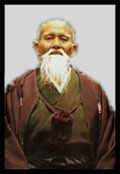Examination Information and Instructions
Participation in examinations is not compulsory and is nothing more than a ‘proof’ that the student has satisfactorily understood (within his/her training period) the necessary techniques. Since Aikido is in reality a lifelong exercise, the levels from 7th to 1st kyu (but also dan levels) are more of a personal measure of progress and a way to organize the training syllabus material rather than “marks” for skill.
Testing examinations are graded by the HAA senior instructor, while the opponents (uke) are other students ranked at least one grade higher than the examination candidate, so that each candidate can show their level of knowledge as clearly as possible – for this reason the HAA invites all yudansha (dan grades) to observe examination candidates.
It should also be noted that the presence of dan grades at examinations lends an official tone to the exams, counters any feelings of inattentiveness that the candidates may have and, in a sense, honors the candidates’ efforts.
Free entrance is allowed to the audience to the extent that it encourages the exam candidates. Also it is preferable for all students to observe examinations to encourage candidates, and in order to become acquainted with the examination procedure which is as follows:
1. The examination committee announces the names of the candidates, beginning with the lower kyu grades, and each candidate, upon hearing his name, replies “ai sensei”, bows from the seiza position, gets up, and takes his position opposite the shomen looking in this direction and waiting. When all candidates have been called for the specific kyu, there follows the bow to the shomen, bow to the committee, and the candidates then follow the instructions of the committee for testing in the techniques.
2. For the execution of techniques the examination committee calls upon several uke who follow the same greeting procedure forming two rows (together with the exam candidates) opposite the shomen. Exam candidates and uke pair up and then follow the instructions of the committee.
3. At higher kyu gradings (but also at any point it considers appropriate) the exam committee can request the substitution of uke with others so that the uke can be in good form and candidates can show their knowledge of techniques in the clearest way.
4. At any point during testing, the exam committee can request candidates to show techniques from previous kyu –as candidates should know these also, and perform them as well as the techniques for which they are being graded.
5. With the completion of the technique the candidates and uke form again into two rows opposite the shomen, bow and sit behind so that the exams for the next kyu grading can continue.
6. The results of the examinations are announced by the examination committee a short while after the end of the exams for the final/highest kyu.
7. Although not compulsory it is customary on completion of the exam program for the public (both students and audience) to congratulate the candidates by clapping as an acknowledgement of their ability. It should be evident that even this process must be conducted in the civil fashion which the HAA generally promotes – therefore students who are also part of the audience are kindly requested to use their judgment and to avoid exaggerated gestures, upon completion of the examination and even more so during the examination. Especially during the later, every type of disturbance is discouraged as it may distract the candidates. In practice the only exception to this rule is during randori for candidates testing for the 1st kyu, as the nature of this technique is such that it impresses the audience, though even then, disturbance should be kept to a minimum.
8. Students (whether testing candidates or attendees) are kindly requested to explain the instructions in paragraph 7 to their acquaintances who are attending the examinations as the audience. It is also noted that, even though taking photographs is allowed, it is best to avoid the use of flash photography as this may prove distracting at best, or could prove dangerous to the candidates and uke at worse.



 FukuShinKan Dojo, 12 Davaki st.and 18 Mylpotamou st., 1st floor
FukuShinKan Dojo, 12 Davaki st.and 18 Mylpotamou st., 1st floor Hellenic Aikido Association on facebook
Hellenic Aikido Association on facebook Hellenic Aikido Association's YouTube channel
Hellenic Aikido Association's YouTube channel